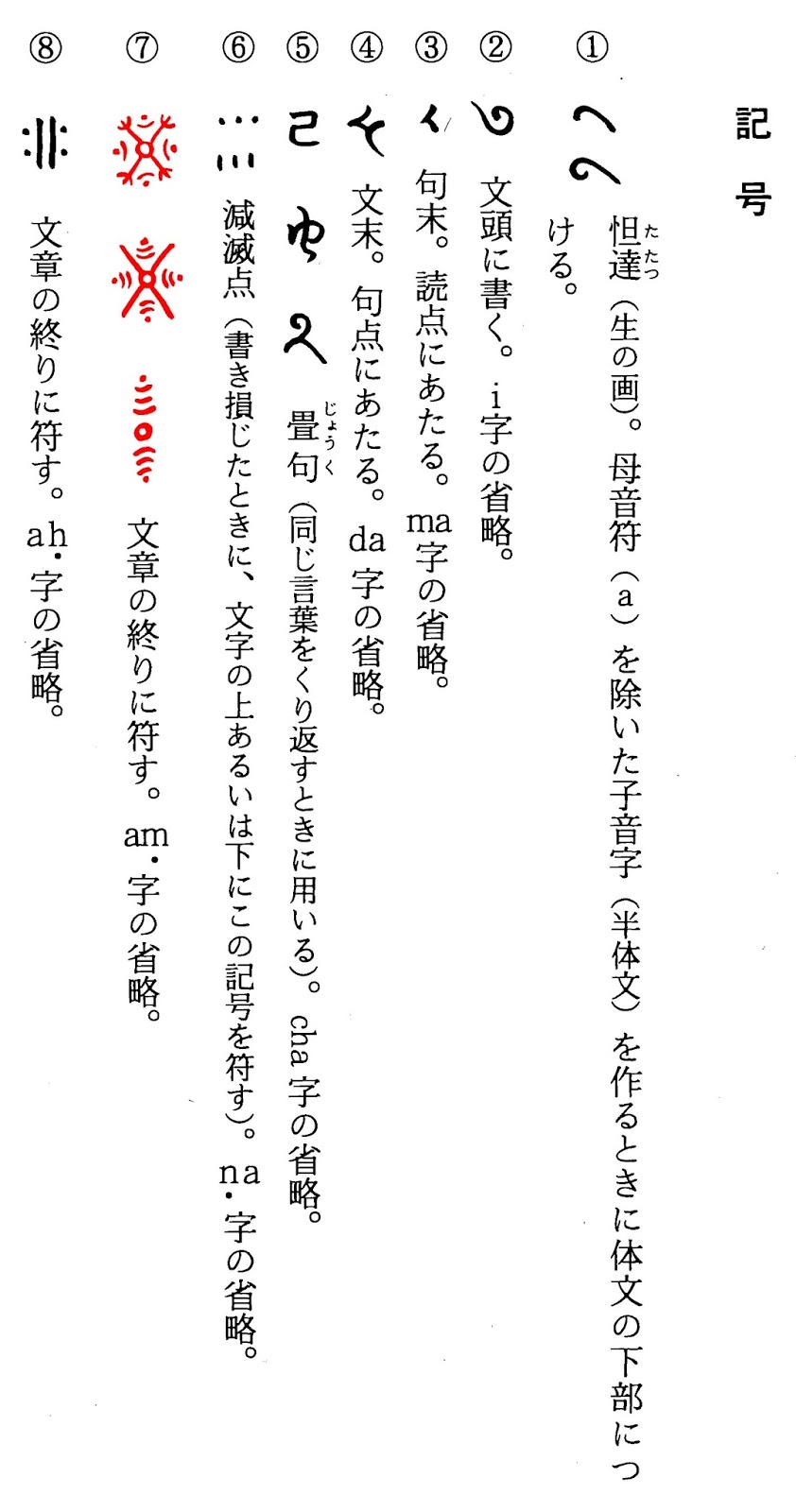Siddham has several characters that are used in manuscripts for marking the
end of text sections. Some of these are shown in column ⑦ below:

Palaeographically, these section marks are similar to characters in other
Indic scripts, such as 𑁍 U+1104D BRAHMI PUNCTUATION LOTUS, which are ornamental
marks. In general, these marks do not possess phonetic values or semantic
meaning beyond their function as terminations. However, as the above excerpt
shows, in the Japanese analysis of Siddham, these marks additionally represent
the syllable “aṃ”.
The extant sources contain several other ornaments beyond the three
shown above. My research identified at least 14, which I proposed for
inclusion in the
Siddham block:

The section marks may be classified into five groups based upon their
graphical structure.
In addition to their representation of “aṃ”, according to certain Japanese
Buddhist traditions, these marks have esoteric connotations that offer
insights into the textual passages after which they are written. Moreover,
the graphical structure indicates other philosophical meanings, of which I
am not fully aware or to which I am not privy! These characters would be
considered ornaments or glyphic variants of a basic set of section marks
according to the character-glyph model of Unicode, but on account of the
semantics they possess beyond their function as punctuation, they have been
encoded independently.